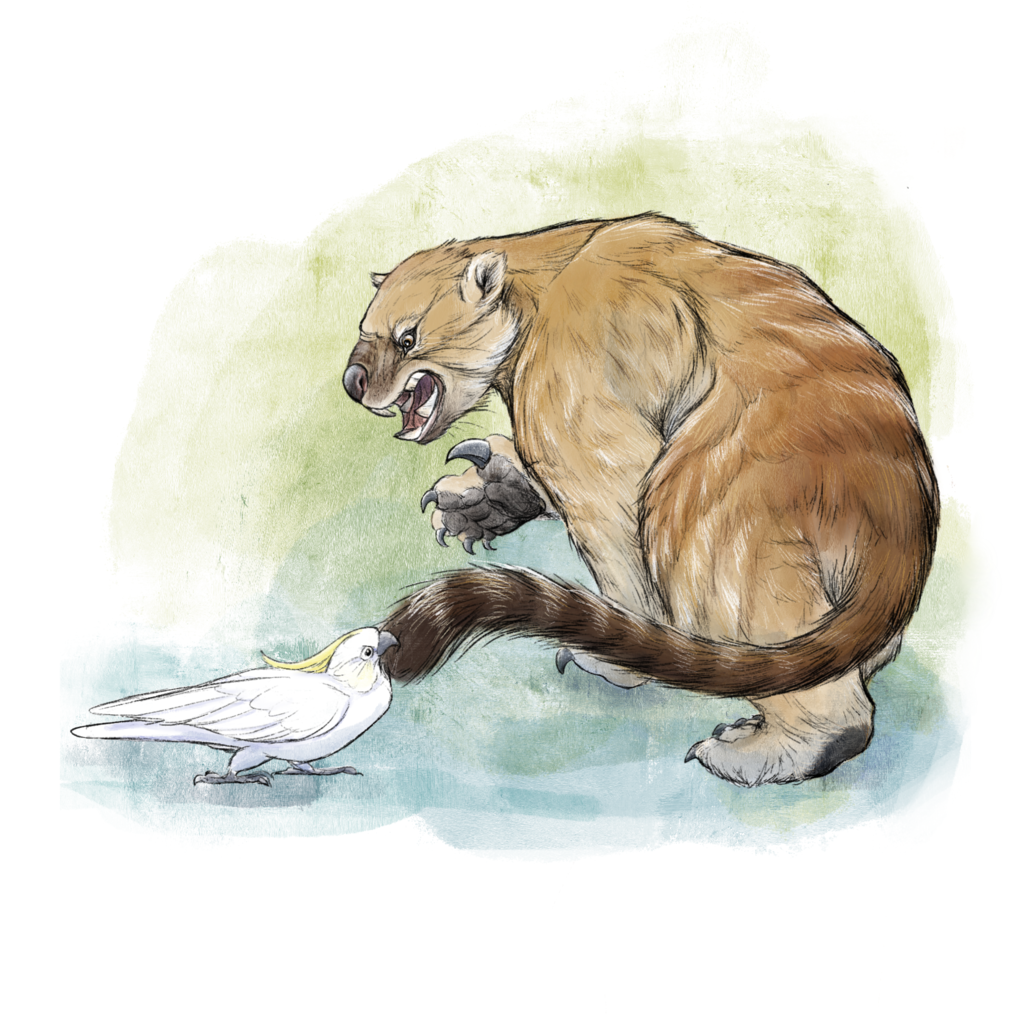Thylacoleo carnifex
Marsupial ‘lion’
Thylacoleo carnifex is the largest known mammalian carnivore ever to live in Australia. First described by Sir Richard Owen in 1859, the discovery of multiple complete skeletons in the late 20th century showed it to be a unique and fascinating predator.
This species was found across much of Pleistocene of Australia, typically in scrubland and woodland. A weak runner but with muscular limbs and a powerful grip in its jaws and hands, T. carnifex was most likely an ambush predator.
Thylacoleo carnifex is the most famous member of the family and was still alive when humans first arrived in Australia. In addition to its strange dentition, it had forward pointing eyes for depth perception, a large claw on a semi-opposable thumb for grasping its prey and limbs adapted to climbing. It really was the original drop bear!
There is evidence that T. carnifex sometimes denned in caves with places like Tight Entrance Cave in Western Australia exhibiting scratch-marks on the walls made by T. carnifex as it moved in and out of the cave.
This particular specimen was a young individual and had some interesting pathologies of the thoracic vertebrae and wrist. Though these pathologies may have impeded its ability to hunt, it appears to have managed to live with these for some time before death.
The bones visible on this page are from a specimen found in Last Tree Cave, Thylacoleo Caves, Nullarbor Plain, Western Australia. Click the links below to view bones of other Thylacoleo carnifex specimens, including another specimen from the Nullarbor – the most complete Thylacoleo carnifex skeleton ever found.
Specimen number: WAM 02.7.6
Significance of specimen: Young individual
Geological age: Pleistocene
State/territory: Western Australia
Locality/site: Last Tree Cave, Nullarbor Plain
